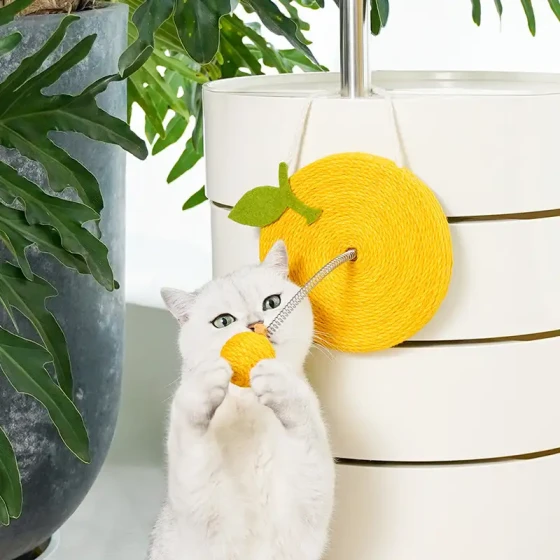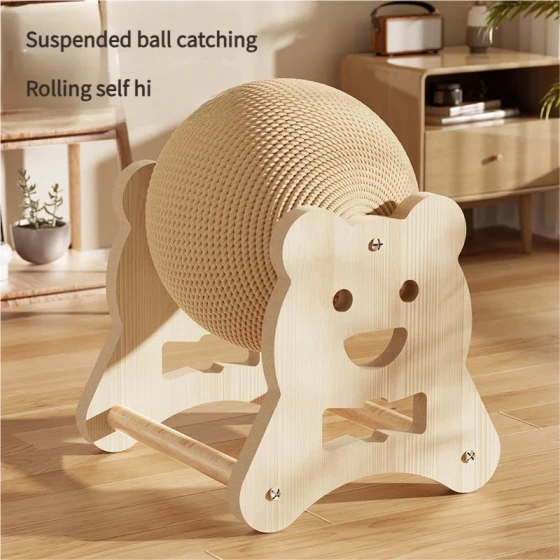Will Forcibly Cutting a Cat's Nails Make It Hate You_Correct Methods and Precautions for Trimming Cat Nails
Cat owners, do you often feel like trimming your cat’s nails is like going to "war"? Don’t worry, you’re not alone! Many cats dislike having their nails trimmed, but that doesn’t mean they will hate you because of it. Forcibly trimming nails may affect the trust between you and your cat, but mastering the correct methods and precautions can make nail trimming a relaxed and enjoyable activity.
Why is it so important to trim a cat’s nails?

You might wonder, don’t cats have scratching posts? Is trimming nails still necessary? The answer is: absolutely necessary! Although cats use scratching to wear down old nail sheaths, this mainly removes old layers rather than truly shortening the nail length. Indoor cats lack sufficient natural wear on their nails, causing them to grow too long. Overly long nails can damage sofas and curtains at home and may even hook into the cat’s paw pads, causing pain, inflammation, or infection, seriously affecting the cat’s walking and health. Regular nail trimming for cats, like our own nail care, is for their health and comfort.
Cat nail structure: Understanding the "quick" is key
Before trimming, it’s very important to understand your cat’s nail structure. Cat nails are retractable and usually kept inside the paw. Their nails are semi-transparent, and if you look closely, you will see a pink area inside called the "quick." The quick contains blood vessels and nerve endings; cutting into it causes pain and bleeding.
- Transparent part: The front tip of the nail without blood vessels or nerves, which can be safely trimmed.
- Quick (pink part): Contains blood vessels and nerves, a sensitive area that must never be cut!
When trimming cat nails, we only need to cut the transparent tip and avoid the pink quick. For cats with dark-colored nails where the quick is hard to see, you can trim a little at a time, observe in good lighting, or have someone help shine a flashlight.
Correct methods to trim cat nails: Turn the "nail battle" into a "nail spa"
Getting your cat to accept nail trimming is about gradual progress and building positive associations, not forcing it. Here are some practical methods and tips:
1. Preparation is essential: Before moving the troops, arrange the supplies!
- Choose the right tool: Get a cat-specific nail clipper. Cat nails are curved, and human nail clippers tend to split their nails. Choose pet nail clippers with a rounded blade for better fit.
- Prepare treats: Have some of your cat’s favorite snacks ready, such as freeze-dried treats or meat paste. This is a great way to bribe your cat!
- Hemostasis powder ready: In case you accidentally cut the quick, have some hemostatic powder or cornstarch on hand to stop bleeding.
- Pick the right time and place: Choose a moment when your cat is relaxed and calm, like just after waking up or after a meal, or in a favorite quiet spot. Avoid trimming when your cat is excited or playing.
- Familiarize with the clipper: Put the nail clipper where your cat often sees it, so it gets used to the tool and reduces fear. Place treats near the clipper to build positive associations.
2. Gradual approach: Take it slow like wooing!
- Get your cat used to paw touching: Regularly stroke your cat’s paws and gently massage their paw pads so they get used to touch on this sensitive area. Reward every time after touching.
- Gently press paw pads to extend nails: Once your cat tolerates paw handling, gently press the pads to expose the nails. Reward each successful nail exposure.
- Familiarize the clipper nearby: When nails are extended, bring the clipper close to their paw without trimming and immediately reward.
- Try trimming one or two nails: Select one or two nails and quickly trim a tiny tip. Then immediately reward with plenty of treats as a "big prize." If your cat resists, stop immediately and try again next time. The goal is not to finish all at once but to create positive experiences.
3. Nail trimming skills: fast, precise, steady!
- Choose a comfortable position: Hold your cat in your arms with its back facing you, or let it sit on your lap. Pick a position comfortable for both you and your cat.
- Gently press paw pads to expose nails: Use thumb and forefinger to gently press the cat’s paw pads, fully extending the nails.
- Find the right spot to cut: Carefully observe the nails, locate the pink quick, and cut at least 2 millimeters ahead of the quick in the transparent area.
- Cut quickly: Use the cat nail clipper to cut the nail tip quickly and decisively. Avoid hesitation, which can make your cat more nervous.
- Angle matters too: Some advise cutting at a 45-degree angle, which helps nails rest comfortably on the ground.
- Don’t forget the “thumb”: Cats have a “thumb” on the inner side of their front paws; remember to check and trim it.
- Do it over multiple sessions: If your cat isn’t cooperative, don’t force trimming all nails at once. Spread it over a few days, trimming a few nails each time.
4. Aftercare and rewards: Reinforce good impressions!
- Give immediate rewards: After trimming one or several nails, immediately offer treats, petting, or verbal praise. Let your cat associate nail trimming with good things.
- Calm them down: If your cat feels anxious during trimming, stop immediately and soothe them.
- Clean and check: After trimming, check if the nail edges are smooth. If needed, use a nail file to gently smooth them.
What to do if your cat resists nail trimming? Try these "tricks"!
If your cat is a "nail trimming nightmare" and still resists after trying the above, consider these aids:
- "Cat burrito" method: Gently wrap your cat in a towel or blanket, exposing only the paw you need to trim. This restricts movement and makes trimming easier. Be careful not to wrap too tightly to avoid extra stress.
- Block vision: Some cats are calmer if they can’t see the trimming. Use a small cloth or a special head covering to cover your cat’s eyes.
- Seek professional help: If you really can’t handle it or worry about hurting your cat, visit a vet clinic or professional pet groomer. They have experience and skills to make the process smoother.
What if you accidentally cut the quick? Don’t panic!
If you accidentally cut the quick, your cat will feel pain and bleed.
- Stop the bleeding immediately: Stay calm and press the bleeding nail tip with hemostatic powder, cornstarch, or a clean cotton ball until bleeding stops.
- Soothe your cat: Gently calm your cat to help it relax.
- Monitor the wound: If bleeding is heavy or doesn’t stop after more than 10 minutes, or if you worry about infection, take your cat promptly to the vet for treatment.
Frequently Asked Questions
- How often should I trim my cat’s nails?
It’s usually recommended to check and trim your cat’s nails every 2-4 weeks. The frequency depends on how fast your cat’s nails grow and their scratching habits. Cats who often scratch may need less frequent trimming, while those who rarely scratch require more frequent trimming.
- Can I use human nail clippers to cut cat nails?
It’s not recommended. Human clippers have flat blades that can split the cat’s curved nails, causing discomfort or damage. It’s best to use nail clippers designed specifically for cats.
- Can scratching posts replace nail trimming?
No. Scratching posts mainly help cats remove old nail sheaths and keep their nails healthy but cannot effectively shorten nail length. Regular trimming is still necessary.
Summary
Trimming cat nails is indeed a headache for many owners, but by mastering the correct methods, staying patient, and providing positive reinforcement, you can turn this "world war" into a "nail spa." Remember, the key is to build trust so your cat doesn’t fear nail trimming. If you encounter difficulties, don’t be discouraged and seek professional help. For your cat’s health and a more harmonious human-cat relationship, let’s work together!


-560x560.webp)


